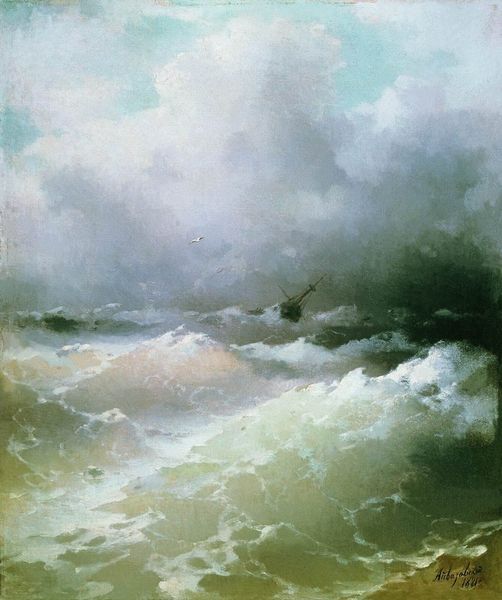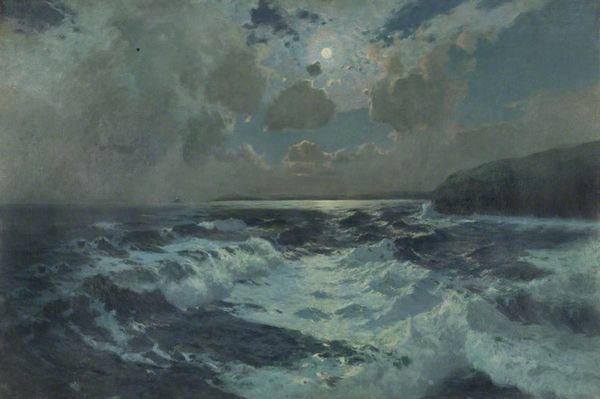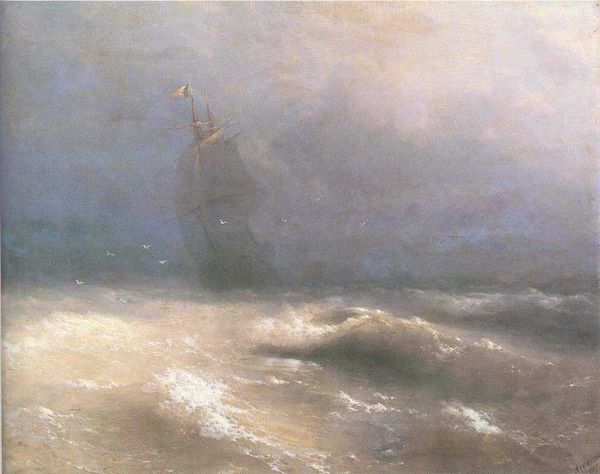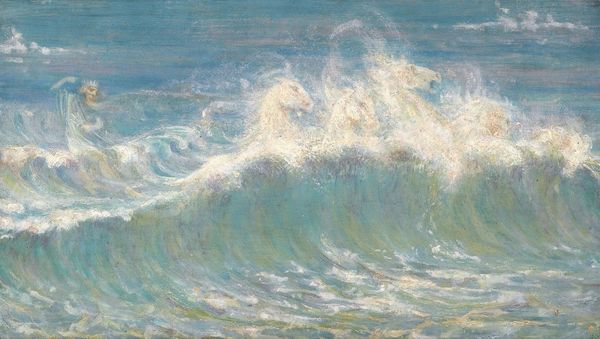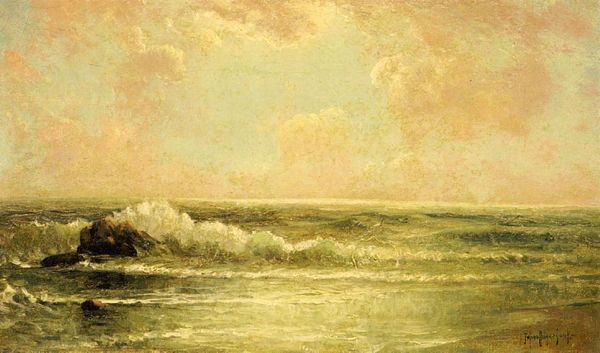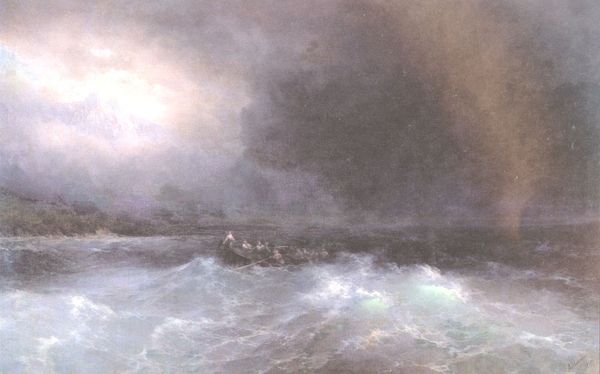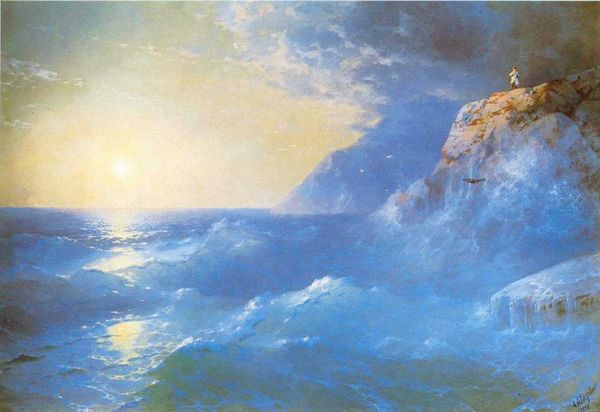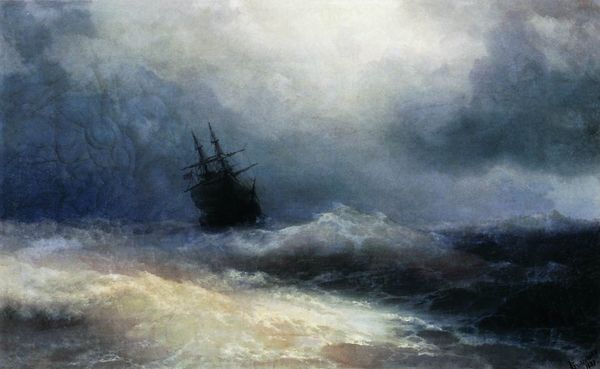
Copyright: Public domain
Editor: Looking at "Sea View," painted in 1895 by Ivan Aivazovsky with oil paints, I'm struck by its turbulent energy, almost like a raw, untamed force on the canvas. The seascape feels both powerful and overwhelming. How do you interpret this work? Curator: It's a potent image, isn’t it? For me, Aivazovsky’s seascapes are more than just representations of the sea; they’re potent expressions of Romantic ideals, particularly the sublime. Consider the social context. Russia in the late 19th century was undergoing massive social upheaval. These paintings offer an escape, a space for contemplating nature's immense power and, by contrast, humanity’s relative insignificance. But also think about access - who would have the leisure time and financial means to contemplate such images, or access the seaside for that matter? Editor: That's fascinating! So, the ‘sublime’ is connected to ideas of power and social escape? Curator: Precisely. And the sea itself can be seen as a metaphor, a symbol of both freedom and danger, reflecting perhaps the shifting sands of Russian society at the time. Think about the light in this painting too. Does it strike you as naturalistic, or something else? Editor: Now that you point it out, the light does seem heightened, almost theatrical. Is that also part of the Romantic ideal? Curator: Absolutely. It reinforces the drama, the emotional impact. And consider the absence of figures. Who gets to experience and benefit from this vision of untamed beauty, and who is excluded? That's a question worth considering. Editor: It gives me a whole new perspective on the piece! Curator: Art enables this dialogue between past and present, between aesthetics and critical consciousness. And sometimes the questions it raises are as valuable as the answers we think we find. Editor: Thank you, I will remember that in the future. I see it as much more than 'just' a seascape now.
Comments
No comments
Be the first to comment and join the conversation on the ultimate creative platform.
